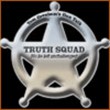| The research is persuasive: Certain foods can calm people down-and cheer them up.
Standing in line at a Cinnabon bakery the other day, I watched a man behind the counter preparing the delicacy of the house. He placed two cups of softened butter on a sheet of dough and began spreading the goo as if it were icing. Hey, isn't this much fat against the law? Then he started sprinkling cinnamon across the buttery surface. The cloud of spice wafted toward me, and all of a sudden I was a kid again, back in my grandmother's kitchen. Her cinnamon rolls were the perfect antidote to any bad mood. No wonder I'm still a sucker for these concoctions.
Food is the most powerful seducement of all. When a friend of mine put her house on the market, she dropped a stick of cinnamon into a pot of boiling water for her first open house. The aroma was enough to trigger sentimental reveries in the most heartless prospective buyer poking through her closets. Freshly baked cinnamon rolls! Apple pie! Call it coincidence, but the house sold that day.
Yet there is more to the emotional power of some foods than associations with things past, or even things forbidden. During the past two decades, researchers have identified tangible effects that certain foods have on people's brain chemistry. The undisputed leader of the food and mood movement is Judith Wurtman of the Massachusetts Institute of Technology in Cambridge. A respected research scientist who was involved in the early studies in the field, Wurtman was also the first to look for and find an audience for these ideas far from academia: people in search of ways to feel better day to day.
Standing today at the front of a packed auditorium in Boston, Wurtman is a compact, vibrant presence in a cherry red suit. On the face of it, it doesn't seem like there would be any relationship at all between whether a person eats four ounces of chicken or a potato and what his mood is going to be like," she says, "unless maybe the chicken is dry or the potato is cold and tasteless.
However, she tells the audience, she's convinced that a potato eaten by itself can calm jumpy nerves, simply because it's almost pure carbohydrate. Meanwhile, she says, choosing a protein such as chicken at lunch will keep a person fresh through an afternoon job interview.
It's a formula that Wurtman has elaborated on in five books and hundreds of speeches-an idea that led this year to the test-marketing of the first food product designed solely to help someone deal with emotional ups and downs: PMS Escape, a prepackaged, pure-carbohydrate drink mix for women suffering from premenstrual syndrome. (The drink is available in drugstores and supermarkets in New England.) "If a woman really has emotional pain," she tells the gathering, "this drink will help her decrease her pain in 15 to 20 minutes.
Surprisingly, such infomercial-like claims do not produce derisive laughter from Wurtman's colleagues. Other scientists also have turned up tantalizing signs that eating pure carbohydrate can cause a shift in a person's mood.
No, her colleagues' major reaction to Wurtman's declarations is that, in real life, following her advice is both hard to do and promises small returns.
Wurtman will acknowledge that other substances-a cup of coffee or a glass of wine-pack more mood-altering power. "It's clearly not the same as taking a Prozac," she says. "And it lasts only a few hours." Still, she challenges any woman who's interested to see for herself if the adjustments in attitude warrant an adjustment in eating habits. "It does work," she says.
Twenty-five year ago Wurtman's husband Richard, a neuroscientist at MIT, was the first scientist to catch on to the idea that carbohydrates affect brain chemistry. Feeding rats meal composed mostly of starch and sugar, he found elevated their levels of serotonin, the brain chemical most associated with good moods. Carbohydrates, the Wurtman's discovered, increase serotonin levels by starting a chain of events that results in more tryptophan entering the brain.
Tryptophan is, of course, an amino acid-one of the building blocks of protein. A synthetic version used to be sold as a sleeping aid until impurities in some supplements caused dozens of deaths and the pills were yanked off drugstore shelves. The compound helps people relax-even nod off-because once it gets into the brain, it is converted into soothing serotonin.
Carbohydrates help tryptophan get into the brain in a roundabout way. Normally tryptophan must compete with five other amino acids in the blood for transport across the blood-brain barrier, a complicated mesh of capillaries that keeps many substances out of the brain. Carbohydrates trigger the pancreas to release insulin, which ferries the other amino acids out of the bloodstream and into the body's tissues. For some reason, insulin leaves tryptophan behind, free to flood the brain. When that happens, mood improves.
At least that's how it works in theory. Because researchers can't actually measure serotonin levels in the human brain, they have to rely on asking people how they feel after eating carbohydrates. Which is exactly what Wurtman did. She had 32 women, some with severe premenstrual symptoms, rate their energy level and emotional state before a high-carbohydrate meal and an hour later. Those suffering PMS symptoms felt far less tense, angry, and tired after the meal. But even women with no PMS symptoms felt slightly less tense and tired.
"We know that people who are stressed reach for cookies, potatoes, pasta, pretzels, popcorn, or candy," Wurtman says, kindly not mentioning cinnamon rolls. "We now think that they are unconsciously trying to medicate themselves with carbohydrates, to increase serotonin levels in order to feel better."
Trying, unfortunately, is not achieving. To obtain the serotonin increase, researchers say, a person would have to eat an all-carbohydrate snack on an empty stomach. Because fat slows digestion, someone who gives in to temptation by buttering his toast or dribbling oil on his pasta will dampen and delay the effect. And if he ingests any protein within four hours of the carbo dose, he'll disarm the mood shift completely.
What's more, not all high-carbohydrate foods work. Fruit doesn't, Wurtman says, because its sugar, fructose, causes insulin to be released too slowly to trigger a serotonin boost. Muffins or brownies are so high in slow-digesting fat that they probably don't increase serotonin levels at all.
What does that leave! Starch. Here's Wurtman's advice: Say a person is nervous about a 1 P.M. presentation. First of all, he shouldn't eat anything after 9 A.M. Then, a half hour or an hour before the meeting, he should have a small snack of a low-calorie, starchy food. "About 30 grams is enough," she says. "That's a cup and a half of dry breakfast cereal. An english muffin with jam. Two cups of pasta is more than enough." Best of all is a potato. Our bodies digest potato starch quickly, inducing a speedy insulin response. "So if someone's at home and the world is falling apart, he should just pop a potato in the microwave," she adds. After about 30 minutes-if he doesn't eat anything else-he should be feeling noticeably better.
Anyone who listens to Judith Wurtman long enough will become convinced that eating a meal that's mostly protein-red snapper, say, or steak-will improve his brainpower. Just as tryptophan is the precursor to serotonin, another amino acid, called tyrosine, is the precursor for nor-epinephrine and dopamine-brain chemicals that aid reaction time and mental acuity. Researchers know that protein-from animal sources such as chicken and fish or plant sources such as beans-will boost the body's levels of tyrosine.
"If someone's doing something very mentally taxing, then he's using up these chemicals in the brain," Wurtman says. "And the only way he can replace them is by supplying the amino acid tyrosine." In other words, by gnawing on a chicken drumstick.
But Harris Lieberman, a psychologist at the U.S. Army Research Institute of Environmental Medicine in Natick, Massachusetts, has researched tyrosine's psychological effects extensively, and he doesn't see it that way. For someone's brain to exhaust its supply of these brain chemicals and depend on tyrosine to make more, Lieberman says, he or she would have to endure truly extreme stress-arctic cold or military combat.
"Under ordinary, everyday circumstances that's simply not the effect," says Bonnie Spring, a psychologist at the Chicago Medical School who has done several studies on food and mood.
Still, if a chunk of lean ham won't help someone master the theory of relativity, it will keep carbohydrates from zonking him out. That's right: As carbohydrates relax him, they can also make him feel downright drowsy. Researchers think this soporific effect helps explain the traditional post-spaghetti energy dip. People who complement their carbohydrates with protein, experts agree, avoid this drop in alertness.
This jibes with biochemistry. When a person eats a ham sandwich for lunch, the meat introduces amino acids that compete with tryptophan for entry to the brain. With tryptophan outnumbered, the rise in serotonin never materializes-so the person doesn't get sleepy.
What does this mean in real life! Someone who notices that his morning pancakes or lunchtime bowl of rice leave him lethargic may want to balance out the meal with some protein. Then again, if he's really looking for a pick-me-up, he's probably already in line for a hot fudge sundae.
The link between food and mood has more to do with sugar and fat than with protein or carbohydrates, says Adam Drewnowski, director of the Human Nutrition Program at the University of Michigan School of Public Health in Ann Arbor. Though he concedes that a dose of carbohydrates can leave people calmer an hour later, he doesn't believe that explains why people go weak in the knees at the first taste of ice cream, chocolate, or cheesecake. "Wurtman uses sweet, high-fat foods like chocolate and doughnuts in her tests, except she calls them carbohydrates," he says. The real comforting power in these foods, Drewnowski believes, resides not in the carbohydrates they contain but in their hefty proportions of sugar and fat.
Certainly, eating sugar can bring anxious people quick relief. Among newborns having blood drawn from their heels, for example, those given a teaspoon of sugar water just before being stuck cry (and presumably hurt) far less than those given plain water. Studies on animals suggest that high-fat foods have a similar soothing effect. "Sweet and creamy is the dynamic duo-fat makes the food desirable, and sugar makes the fat invisible," says nutritionist Elizabeth Somer, the author of the best-seller Food & Mood.
In Drewnowski's view, humans hunger for fatty, sugary treats because the substances in them trigger the brain to release endorphins, morphine-like chemicals that send pleasure signals throughout the body, including the mouth. In one study, he gave people a drug that disarmed their endorphins, then fed them goodies from Snickers bars to Oreo cookies. Without the endorphin reward, the normally irresistible morsels gave the volunteers no more joy than a stick of celery.
Of course, people who turn to a sweet snack when they're anxious or blue run the risk that they may not be able to stop at one scoop or cookie. And even if they don't go overboard, sweets may leave a lingering sour taste. "Women in particular often feel guilty or angry with themselves when they give in to a craving," Somer says.
For people who just aren't susceptible to binges or self-reproach, however, there's no safer route to pure pleasure than nibbling on forbidden foods. The queen, of course, is chocolate, which not only boosts endorphins but probably packs enough sugar to trigger Wurtman's serotonin effect. (Though the fat content, which slows digestion, is likely to delay the onset.) Chocolate also contains a caffeine look-alike and a similar substance called theobromine. Many researchers believe these compounds give chocolate-lovers a coffee-like buzz. But if something low-cal is called for, Wurtman's carbohydrates are certainly a better way to go.
Reference: Shawna Vogel, January 1997 Hippocrates, p. 67-69, San Francisco, CA: Time Publishing Ventures Inc.
|






















































































